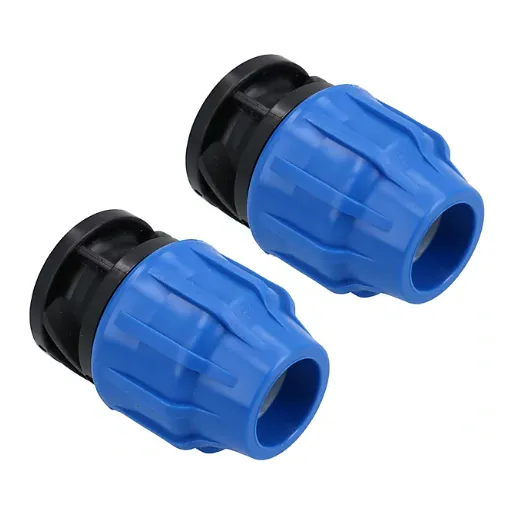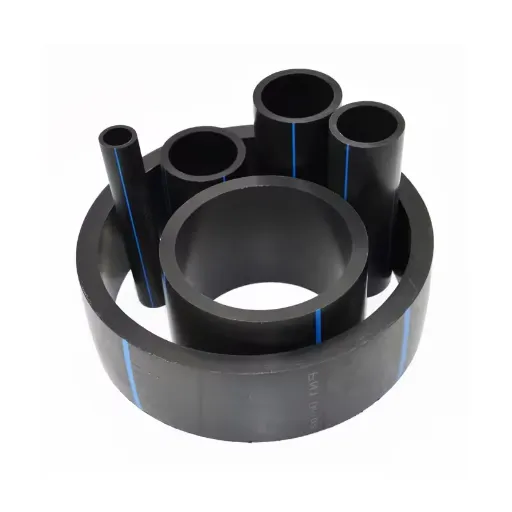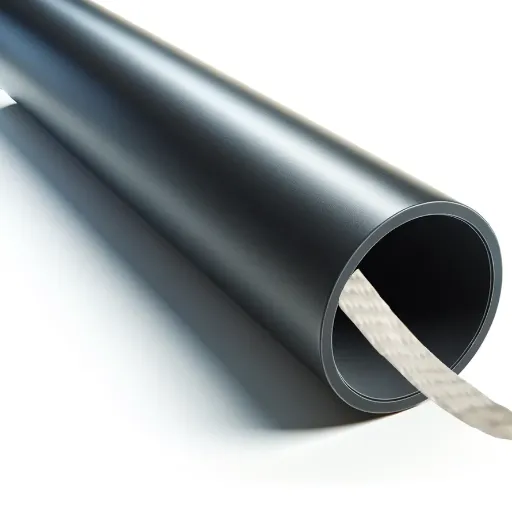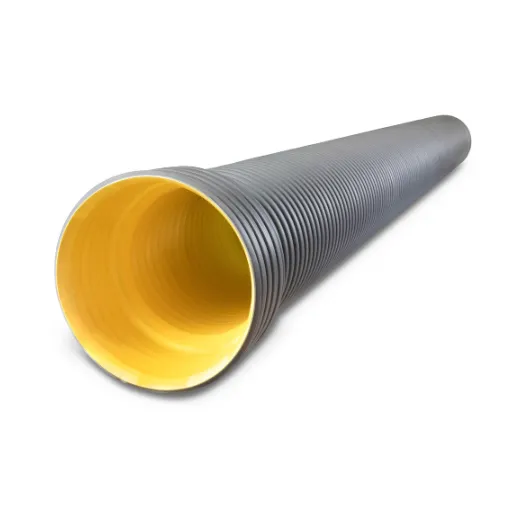HDPE pipe caps are very important for many applications, allowing a very efficient solution for sealing the pipe ends and ensuring their optimum performance. The durable caps can protect the pipes during transportation, help prevent debris entering in unfinished systems, or increase the longevity of infrastructures. But, what are HDPE pipe caps and why are these so widely used? This article will delve into the core functions, advantages, and diverse applications of these end caps; therefore, giving you an understanding of how pivotal they are. So, remain glued as we associate with how HDPE pipe caps make piping systems more efficient and durable.
What is an HDPE Pipe Cap?
Definition and Purpose of HDPE Pipe Caps
HDPE pipe caps are specialized fittings that fit tightly onto the ends of HDPE pipes to close them securely. These caps act as a protective barrier, preventing the infiltration of dirt, debris, or any other contaminants inside the pipe system. They are designed to fit tightly and provide a strong seal that protects the pipe’s performance and longevity.
HDPE pipe caps are mainly used to protect pipes while they are being transported, stored, or maintained. Capping the pipe ends prevents damage from environmental factors such as moisture or dust, which may adversely affect the structural integrity of the pipe. Before or during system tests and repairs, the caps are also used to seal the pipes temporarily.
HDPE pipe caps are valuable for their sturdy nature and capacity to withstand rough conditions. Being lightweight, they are easy to install and remove, with high corrosion, chemical, and temperature resistance emphasizing their long-term reliability. This dual-protective-resilience combination makes HDPE pipe caps a necessity in diverse fields-from plumbing, construction, and agriculture to oil and gas.
Types of HDPE Pipe Caps
HDPE pipe caps exist in different types according to industry and application needs. The main types include threaded, push-fit, and flanged caps. Such alternatives cater to the very different uses, guaranteeing a secure and trustworthy fit for every kind of HDPE piping system.
Threaded HDPE Pipe Caps
Threaded caps screw on to pipe ends with male threads on the outside. These caps provide the tight seal required for cases that need extra protection against fluid leakage or contamination. Their reusable nature makes them a frequent choice for systems that may need to be taken apart.
Push-Fit HDPE Pipe Caps
Being push-fit, it is easy to install and remove-in whereby the cover is simply pushed onto the end of the pipe without any help of adhesives or tools. These caps are usually used for occasional applications or as protective covers that keep foreign particles from entering upon transport or storage.
Flanged HDPE Pipe Caps
A flange cap has a flange connection for compatibility with specific flanged piping systems. These caps are often used in applications of high pressure where secure seals must be established, usually in industrial or heavier settings.
Each type of HDPE pipe cap has been designed with a balance of performance and durability to guarantee the protection that it affords will be dependable in all environments and conditions.
Importance of Fittings in Pipe Systems
An essential feature in pipe systems to ensure firm teeth-and-inch connections between differing sections of piping are fittings. They determine direction, regulate flow, expand, or branch off the pipes, thereby ensuring the proper working of the system. Without fittings, it would be impossible to create flexible and reliable piping networks to meet various industrial and residential needs.
The foremost is an increase in durability and performance provided by fittings. They attempt to control the pressure changes, avoid leakages, and reduce constant wear and tear due to environmental factors or usage. For instance, the right fitting can help to thwart any corrosions in cases of systems exposed to harsh chemicals or to high temperatures, therefore ensuring an extended period of functional life for some critical infrastructure.
The other essential flexibility are things that fittings provide in the design and operation of pipe systems. It is far easier to modify layouts, repair damages, or expand existing networks without disruptions when fittings are involved. Whether it’s keeping the water flowing in urban areas or running smooth on an industrial establishment; the very essence of the system’s efficiency and reliability depends on the correct selection and installation of fittings.
Applications of HDPE Pipe Caps
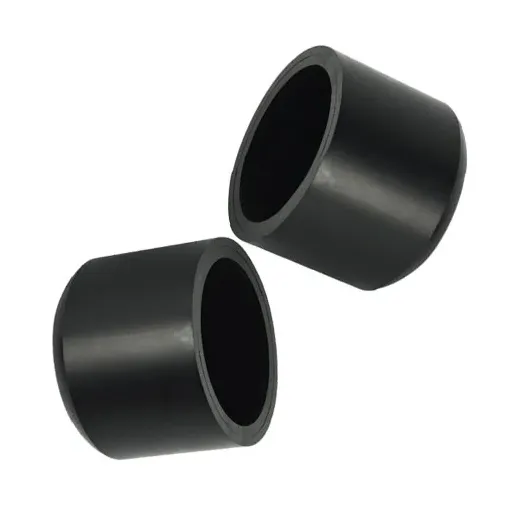
Construction Industry Uses
HDPE pipe caps stand very important in many applications in the construction field. Being highly durable and versatile, this makes them perfect in shielding the pipe system through which the construction process can be efficiently carried forth. Here are some of the key uses of HDPE pipe caps in construction:
- Protection While in Transit and Storage:
In their very nature, these caps prevent the pipe ends from being damaged or contaminated gone during transportation or storage. This acts as a barrier that stops debris, moisture, or pests from entering into the pipes, thereby preserving their integrity until installation. - Sealing Unused Pipe Ends:
Pipe caps are usually placed on unused pipe ends on either a temporary or permanent basis to help prevent accidental leaks or contamination at construction sites. - Pressure Testing of Pipe System:
HDPE caps are used to close off pipe systems during construction and during the testing phase to carry out pressure testing. This confirms that the piping network does not have leaks and is safe to the required standards. - Customization of Fittings for Complex Designs:
The HDPE pipe caps can be customized and fabricated as required by the given dimensions and drawings, making them suitable for unique construction projects. This flexibility allows working with pipes in complicated situations. - Resistiveness Against Corrosion and Weather:
In construction projects, while the tools or equipment have to face varying climate conditions or materials that can corrode, HDPE pipe caps stand resilient in corrosion resistance and careful protection of said pipe ends from environmental corrosion.
These application potentials clearly elucidate the importance of HDPE pipe caps in construction sites, maximizing their operational safety.
Plumbing and Water Supply Applications
Because of the Higher-Density Polyethylene Composition, HDPE pipe caps maintain the practicability of plumbing and water supply systems with secure and efficient activities. Following are the applications and their descriptions:
- Protection During Transportation and Storage:
During transportation and storage, pipe-cap damage can be prevented by HDPE pipe caps; they prevent contamination and the entry of dirt into said pipes. This is crucial in maintaining pipe integrity and avoiding leakage problems. - Water Contamination Prevention:
These caps provide a tight seal that prevents dirt, bacteria, or other contaminants from entering the system, thereby ensuring the availability of clean and wholesome water. - Pressure Management:
In a high-pressure water system, the pipe caps are utilized as a seal for those pipe sections that are not in use, thus preventing their unwarranted leakage and keeping standard water flow through the whole plumbing network. - Temporary closures for maintenance work:
Closing-off Unused Pipes with the Help of Pipe Caps So That Technicians Can Work Undisturbed with Procedures to Repair or Upgrade the Plumbing. - Corrosion Protection:
By preventing the pipe ends from being exposed to moisture and corrosive agents, HDPE pipe caps increase the life span of the plumbing system and lessen its need for long-term maintenance.
These uses present a few of the many applications where HDPE pipe caps find relevance in the support of plumbing and water supply infrastructure.
Agricultural Uses of HDPE End Caps
These HDPE end caps are vital in a farm setting as catalysts for smooth irrigation and protection against damage to the setups. Being sturdy, cheap, and able to stand the rigors of atmosphere, there must be no question of their presence in the deployments of present-day agriculture. The plurality of uses of the HDPE end caps in agriculture can be listed below:
- Irrigation Pipeline Protection:
Here the HDPE end caps are used to seal the open ends of irrigation pipelines so that debris, soil, or other unwanted contaminants may not enter the system. This ensures uninterrupted water delivery with little maintenance required in the future. - Seasonal Pipeline Closure:
Since the pipelines go unused during non-irrigation seasons, HDPE end caps are used to close them for temporary protection against environmental wear and tear. This therefore increases the life span of the pipelines. - Water Wastage Prevention in Drip Irrigation:
HDPE end caps are used to cover unused or redundant parts of the drip irrigation system to prevent water wastage thereby ensuring that crops receive precise distribution of water. - Corrosion Resistance When Using Fertilizer:
Agricultural water systems often carry fertilizers and chemicals. Against corrosion, HDPE end caps prevent leakage and henceforth contamination of the equipment or crop. - Pest Prevention:
Open-ended pipes may serve as entry points for insects or very small animals. HDPE end caps keep such possibilities in check and help preserve the integrity and hygiene of the irrigation system.
These applications emphasize the importance of HDPE end caps in enhancing agricultural productivity and safeguarding irrigation infrastructure.
Benefits of Using HDPE Pipe Caps
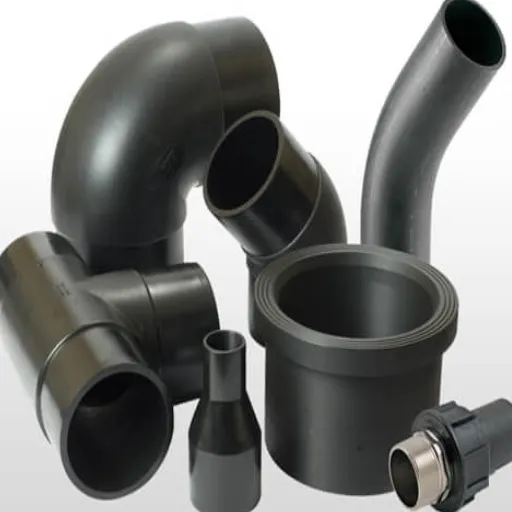
Durability and Resistance to Environmental Factors
HDPE pipe caps are designed to withstand harsh outdoor environments with the aim of ensuring longevity and reliable performance in a variety of areas. Durability and the ability to resist external agents make them ideal for the protection of irrigation systems and other infrastructure. Here are five particulars about their durability and resistance to environmental factors:
| Resistance Property | Description |
|---|---|
| UV Resistance | HDPE pipe caps are able to resist any damage caused by ultraviolet rays and thus stand from depreciating as a result of long exposure to sun rays. This ensures that they do not lose their functional purpose in open areas where uninterrupted sun exposure occurs. |
| Corrosion Resistance | Metals rust and corrode with time; however, HDPE material does not corrode. It can easily be used for irrigation and agricultural purposes when an opportunity arises and calls for corrosion. |
| Temperature Tolerance | These caps take the load of high temperatures, freezing winters, or scorching summers, without cracking or deformation. Other than thermal stability, uninterrupted services in the field may be provided in many other ways given the local conditions. |
| Absorbance of Impacts | The textural strength is high, so HDPE pipe caps can sustain the impact of any unforeseen hits and heavy unintentional loads without fracturing or wearing away. |
| Chemical Resistance | HDPE pipe caps are resistant to most chemicals typically used in agricultural systems-in form of fertilizers and pesticides. This ensures that the infrastructure of irrigation remains functional over time. |
Together, these properties provide the basis for the robust construction of HDPE pipe caps and make them dependable in maintaining irrigation systems’ efficiency and integrity in harsh environments.
Cost-Efficiency in Pipe Systems
HDPE pipe caps are very sturdy as well as very cost-efficient, making them suitable for a variety of pipe systems. Following are five topmost factors that confer cost-efficiency to these:
- Long Life Span: Longer lifetime for HDPE pipe caps means that fewer replacement cases are needed, thereby imparting to lesser costs toward maintenance in the long run.
- Low Maintenance: Due to strong and chemical-resistant properties, they undergo less wear and weathering; thus affecting lower maintenance costs.
- Full energy efficiency in manufacturing: HDPE pipe caps come about with energy-efficient means of manufacturing, further lowering costs of production that ultimately pass into the price of the product on the market.
- Light Weighted Design: HDPE materials are far lighter than the conventional metal options, thereby making the transportation and thus the installation cheaper.
- Leakage Resistance: HDPE caps prevent leakage and maintain the integrity of the pipe system, thus wasting water and incurring costs.
HDPE pipe caps offer enormous value when placed at the intersection of durability and functionality, resulting in tangible economic returns for industrial and agricultural applications.
Ease of Installation and Maintenance
HDPE pipe caps are made with the operator in mind, considering installation and maintenance with equal care. Here are five details and advantages related to the ease of installation and maintenance of the caps:
Lightweight Design
Being quite light compared to some other traditional materials, HDPE caps negate the need for heavy machinery during installation, helping to speed up the work.
Fast Installation
Thanks to an exact fit combined with some flexibility, these HDPE caps can be installed and locked in place fast, saving much time and reducing labor costs.
Corrosion Resistance
They need very little maintenance since they are resistant to corrosion and chemical degradation; this also extends their service life and eliminates the need for frequent replacements.
Adjustable Under Various Conditions
HDPE caps perform well in adverse weather conditions, making them appropriate for many environments with only mild performance degradation.
Easy Replacement
The strong yet lightweight nature of HDPE caps permits easy mounting or removal whenever necessary.
These aspects regard the usefulness and maintenance ease of HDPE pipe caps, making them well suited for several uses.
Choosing the Right HDPE Pipe Cap
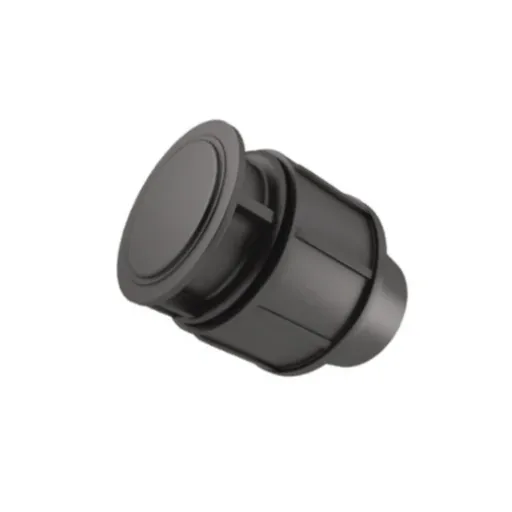
Factors to Consider When Selecting Caps
In selecting HDPE pipe caps, several technical and application-specific considerations must be carefully analyzed to ensure peak performance and durability. Note the critical considerations:
| Factor | Considerations |
|---|---|
| Cap Dimensions and Fit | It is essential that the existing diameter and fit of the cap be compatible with the pipe specifications. Caps of an undersized nature might bear against a perfect seal, while oversized ones would not stand the operational strain and loosen, thereby diminishing protection. |
| Environment of Application | The environment of application holds immense influence in choosing a cap. There is a need for engineers to consider factors such as temperature variations, chemical exposure, UV rays, and pressure fluctuations to guarantee that the HDPE cap material properties are compatible with the specific demands of the application. |
| Material Compatibility | To have reaction occurring that would degrade the system is contradictory to the compatibility of the materials of the pipe and the HDPE cap. Also, the cap must be resistant to the fluidizing or gaseous agents it might be exposed to in the application. |
| Performance Standards | Verify that the selected cap meets relevant industry-related standards and certifications, such as ASTM or ISO standards, to assure durability, chemical resistance, and structural integrity. |
| Load Handling and Impact Resistance | If subjected to mechanical stress or handling during transport and installation, priority should be given to caps with enhanced impact resistance and load-carrying capability. |
| Economics and Life Cycle Costs | Cost considerations extend beyond the initial procurement. Ideally, high-quality HDPE caps tend to have less long-term costs given that they are durable and require less maintenance, thus lengthening the service life. |
After thoroughly looking into these aspects and considering the needs of the specific application, the professional will be able to select HDPE pipe caps that meet the efficiency and a long life of the system.
Shop by Price: Finding Affordable Options
When searching for affordable variations of HDPE pipe caps, I tend to balance cost against value and performance. It is crucial to assess the exact requirements of the application first to garner a fuller picture regarding the prevention of overspending on features unnecessary for their durability and working standard. We compare several suppliers and examine their cost quotes for the competitive pricing without giving away value for less.
Economies of scale are important for me when ordering materials. Ordering in large quantities reduces the cost per unit and is thus a cost-effective strategy for sizable projects. I also check into industry certifications: in general, a product that adheres to some set quality standard will provide great long-term value, even if buying it initially requires a bit more cash.
To make the prices even more affordable, I watch out for seasonal sales or discounts through bulk purchases and supplier promotions. Partnering with a vendor that can provide warranties fairly and give post-sale support is equally crucial since this presents the least possibility of having unexpected expenses due to product failure or replacement. With these in mind, I never fear securing affordably priced, all-high-performing HDPE pipe caps that fit into my requirements.
Installation Techniques for HDPE Butt Fusion End Caps
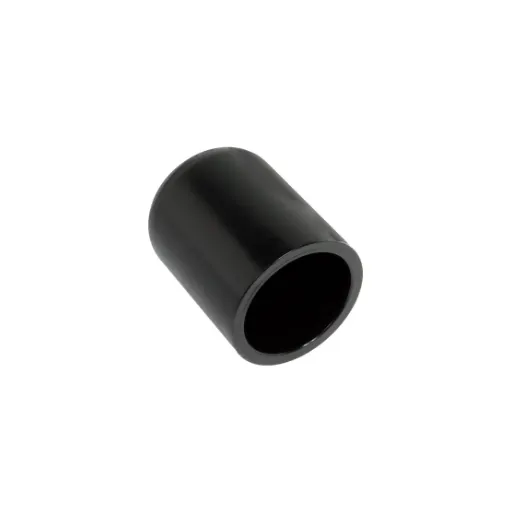
Overview of Butt Fusion Process
Butt fusion has become one focal technique for thermoplastic joining, mainly with high-density polyethylene (HDPE) pipes and such fittings as end caps. In this method, heat and pressure are applied to essentially melt and join two prepared pipe ends surface-to-surface, creating a seemingly impregnable weld. The temperature, alignment, and time-temperature cooling cycles must be kept within very exact limits during the process, so as to secure the strength of the fusion and eliminate any possible weakness that could work against pressure or hostile environmental conditions.
The process of butt fusion typically consists of four basic steps. First, the ends of the pipe and end cap are prepared by planing so that they can be totally flat, smooth, and free of contaminants or dust. The heated surfaces are then heated using the heating tool to allow the heat to be perfectly consistent at the fusion interface so that the material melts uniformly. With the ends molten, the two ends are pressed together against a predetermined pressure to create a strong molecular bond. The joint is then allowed to cool down under pressure, and the connection is solidified. To ensure the strength and soundness of the weld, every step has to be undertaken according to recognized standards such as the ASTM F2620.
Advanced research and data have proved the existence of like the setting temperature of heating plates, generally held between 390°F and 450°F, and the holding pressure during the cooling stage, all of which may significantly affect weld strength. Studies show that inappropriate application of heat or misalignment may reduce tensile strength by 30% whereas butt fusion joints made correctly usually attain or exceed the original pressure rating of the pipe. Such a methodical and meticulous art of the butt fusion process realizes the joint that can endure complex operational demands while in use in gas distribution, water treatment, and industrial piping systems.
Step-by-Step Installation Guide
Step 1: Preparation and Inspection
The first step requires a thorough inspection of the pipe surfaces and related equipment to ensure they are free of contaminants and defects, or to see if foreign matter has accumulated. Under ideal circumstances, the pipe ends shall have been cut square, slightly longer than necessary, after calcium hydroxide has been tested, and the ends shall be of equal dimensions, so the pipe ends will align perfectly. Next, clean all areas that come in contact with each other during the fusion process. Use a lintless cloth and an approved cleaning agent to avoid any residues of dirt, oil, etc.
Step 2: Alignment of Pipes
Clamp the pipes inside the butt fusion machine, making sure of proper alignment. The misalignment might impair the strength and quality of the joint. Use the alignment tool to verify that the pipes are concentric and axially lengthwise with one another.
Step 3: Facing
Using the facing tool, these ends are milled to give smooth and parallel surfaces. The milling operation is of prime importance as it removes imperfections that can result in fault in the joint. After that ensure ends are in perfect alignment and that no visible gaps exist.
Step 4: Heating
Put the heating plate into the fusion machine, allowing it to get the required temperature as per the pipe material specifications. The pipe ends are then positioned onto the heating plate with uniform force to create an even melt bead, an indication of proper heating, and hold for the specified heating time to assure complete melting of the pipe surfaces.
Step 5: Fusion and Joining
The heating plate must be removed quickly but carefully, so as not to disturb the molten pipe ends. The melted pipe ends are pressed together using a uniform force as stipulated by the manufacturer. This pressure creates the fusion bond, and an even bead should form all around the joint to show even pressure was applied.
Step 6: Cooling Phase
The new joint must be allowed to cool under pressure for the period of time specified in the installation guidelines. Premature handling or moving of the joint can impact its structural integrity. Protect against the ingress of air or water during this cooling stage to ensure a proper finish.
Step 7: Final Inspection
Afterwards, conduct a visual and physical inspection on the fusion joint to verify uniformity and consistency in the bead application, as well as clean alignment. Run tests to ensure the joints fulfill the needed parameters of pressure and tensile strength for practical usage.
This detailed procedure ensures that the installation is synonymous with high-level performance, dependability, and compliance, which is important from the very beginning in high-end applications like water systems, energy pipelines, and industrial operations.
Common Challenges and Solutions
| Challenge | Solutions |
|---|---|
| Thermal Expansion and Contraction | One of the most common problems facing pipeline systems is the misalignment of elements caused by either thermal expansion or contraction or the contraction of stress inside the system due to these variations. To address the matter of alignment, engineers generally incorporate expansion joints or loops into the design that entertains thermal movement. The other measures include selecting materials that resist high temperatures and exhibit high flexibility to minimize system stress and maximize performance. |
| Corrosion and Material Degradation | Corrosion has remained a chief issue, especially in metallic pipelines exposed to environmental conditions and due to the chemical nature of the fluids conveyed. In order to keep minimization of degradation effects throughout time, the implementation should include advanced coatings, cathodic protection systems, and the use of corrosion-resistant alloys such as stainless steel. Furthermore, regular inspections and maintenance schedules should be in place to enable early detection and intervention of corrosion. |
| Operational Failures Because of Pressure Fluctuations | Pressure surges or fluctuations, also referred to as water hammer hits in liquid systems, bring about the failure or damage of various components. This problem is eliminated by enabling the stabilization of pressure levels with surge tanks, pressure release valves, and dampening mechanisms. Ensuring that design parameters are considered in the installation, such as the maximum operating pressures, further increase the life span and safety. |
| Leakage of Joints or Connections | Joints fail or leak due to improper installation, material fatigue, or external mechanical impacts. Solutions are to use good quality sealants, respect torque specifications, and follow advanced inspection methods such as ultrasonic tests to detect potential weak points. |
| Blockage of Pipelines or Flow Restrictions | Pipeline blockages caused by sediment buildup, scaling, or foreign objects can very much hamper operation efficiency. Measures for preventing blockage include using strainers, pigging at periodic intervals, and using chemicals for the cleaning of deposit formation. Flow-monitoring systems provide a realtime flow dataset for rapidly meaningful identifying and addressing blockages. |
Working out these issues systematically and technically, and using the response of intermediate monitoring systems, industries may witness enhanced operational efficiencies with guaranteed performance standards.
Frequently Asked Questions (FAQ)
Q: What is an HDPE pipe cap?
A: An HDPE pipe is a fitting in California to seal the end of a high-density polyethylene pipe. It provides a stiff and durable closure against leakage or to protect the pipe ends from contaminating agents such as silica dust.
Q: What are the applications of HDPE pipe caps?
A: They are usually placed in drainage applications, water supply lines, and gas distribution and are very important to be sure that it tightly seals under any pipe fitting.
Q: How do I choose the right HDPE pipe cap?
A: In picking the right HDPE pipe cap, first consider the diameter of the pipe. You would also want compatibility for materials to a great degree, alongside the application needs. The cap should provide a snug sealing, and above all, ensure it meets your standards.
Q: Do HDPE pipe caps come in different sizes?
A: There are sizes and diameters of HDPE pipe caps to suit varied pipe diameters. Such a varied set gives the user a chance to select the item that best suits their needs.
Q: Can HDPE pipe caps be used for drainage applications?
A: Yes, it is a manifold application to use HDPE pipe caps in drainage to seal pipes. This, in short, prevents leakage in the course of water flow. Their robust material would be suitable for such applications.
Q: What is the cost of HDPE pipe caps?
A: Cost-wise HDPE pipe caps can vary a lot depending on size, brand, and supplier. According to the price, ask in an online store so that one can find a cost-friendly one for a project.
Q: What are butt fusion end caps?
A: Butt fusion end caps are a special kind of HDPE pipe caps that are joined to pipes through the butt fusion method. This method gives rise to a strong and leak-proof joint; hence, they are widely preferred for high-density polyethylene applications.
Q: Is it true that HDPE pipe caps protect against environmental influences?
A: Yes, HDPE pipe caps protect the ends of the pipe from environmental factors. The rigid structure ensures long-lasting durability through hard conditions, such as moisture, dirt, and chemicals.
Q: What equipment is needed to install HDPE pipe caps?
A: Installation of HDPE pipe caps generally requires common plumbing tools, such as pipe cutters and a fusion machine for butt fusion end caps. Having the right equipment will allow the installer to do the job well.
References
-
Texas A&M University: Design Standard – Underground Piping Installations
This document provides guidelines for polyethylene-wrapped pipes and their installation. -
Texas Tech University: Large Diameter HDPE Pipe for Highway Drainage
This report discusses the development of specifications for large-diameter HDPE pipes used in highway drainage. -
Auburn University: Plastic Pipe for Highway Construction Phase 2
This research investigates the use of thermoplastic pipes, including high-density polyethylene, in highway construction. -
Delaware Department of Transportation: HDPE Pipe Cover Issues
This presentation addresses design and placement issues related to HDPE pipes. -
Texas Department of Transportation: Special Specification 4122 Thermoplastic Pipe
This specification outlines the requirements for HDPE pipes and fittings made from virgin polyethylene compounds.



